Learn about the nursing care plan and management for chronic pain, including assessment, nursing diagnosis, and intervention strategies. Discover how nursing care can improve the quality of life for patients with chronic pain and promote better pain management outcomes. Find out how nurses can play a critical role in managing chronic pain, providing support, and enhancing patient education.
What is Chronic Pain?
Chronic pain is often described as any pain lasting more than 12 weeks, persisting more than one month after the resolution of an acute tissue injury, or accompanying a nonhealing lesion. The pain may be classified as chronic malignant pain or chronic nonmalignant pain. Malignant pain is linked to a particular cause like cancer. In nonmalignant pain, the original tissue injury is not progressive or has been healed but the patient still experiences pain.
Chronic pain can be mild or excruciating, episodic or continuous, merely inconvenient or totally incapacitating. Eventually, it becomes more difficult for the client to differentiate the exact location of the pain and clearly identify the intensity of the pain. Some may suffer chronic pain in the absence of any past injury or evidence of body damage. It may limit the person’s movements, which can reduce flexibility, strength, and stamina. This difficulty in carrying out important and enjoyable activities can lead to disability and despair. Family members, friends, co-workers, employers, and healthcare providers question the legitimacy of the client’s pain reports because the client may not look like someone in pain. The client may also be involved in using pain to earn attention or to avoid work, commitments, and responsibilities.
The emotional toll of chronic pain also can make the pain worse because of the mind-body links associated with it. Effective treatment requires addressing the psychological as well as physical aspects of the condition.
Causes
There are many causes of chronic pain. It may have started from an illness or injury, or there may be an ongoing cause of pain. However, many still suffer from chronic pain in the absence of any past injury or evidence of illness (Johns Hopkins Medicine, 2023). Here are some related factors that may lead to chronic pain:
- Chronic physical disability. Conditions such as arthritis, fibromyalgia, or back pain can result in ongoing discomfort, inflammation, and structural changes, leading to the development of chronic pain. The constant physical limitations and reduced mobility associated with chronic physical disabilities can further contribute to muscle tension, joint stiffness, and overall discomfort, exacerbating the experience of chronic pain.
- Chronic psychological disability. Psychological factors such as depression, anxiety, or unresolved emotional trauma can heighten the perception of pain and lower the pain threshold, amplifying the experience of chronic pain. Stress, which is commonly associated with chronic psychological disabilities, can lead to increased muscle tension and heightened sensitivity to pain.
- Disease process (compression/destruction of nerve tissue/body organs, infiltration of nerves or their vascular supply, obstruction or a nerve pathway, inflammation)
- Injuring agents (biological, chemical, physical, psychological)
- Side effects of various cancer therapy agents
Signs and Symptoms
Chronic pain contains little evolutionary benefit compared with acute pain. In viewing chronic pain as a disease, clients and providers might shift their expectations from eradicating the problem to controlling it. Consistent with other diseases, chronic pain is associated with unique, sometimes disease-specific, alterations in the peripheral nervous system and CNS, along with many quality-of-life decrements (Cohen et al., 2021). Chronic pain is characterized by the following signs and symptoms:
- Alteration in muscle tone (varies from flaccid to rigid); a facial mask of pain
- Altered ability to continue previous activities
- Anorexia
- Atrophy of the involved muscle group
- Autonomic responses (diaphoresis, changes in BP, respiration, pulse)
- Changes in appetite/eating, weight; sleep patterns; altered ability to continue desired activities; fatigue
- Changes in sleep pattern
- Depression
- Distraction/guarding behavior protecting a body part
- Facial mask; expressive behavior (restlessness, moaning, crying, irritability); self-focusing; narrowed focus (altered time perception, impaired thought process)
- Fatigue
- Fear of reinjury
- Guarded/protective behavior; distraction behavior (pacing/repetitive activities, reduced interaction with others)
- Irritability, restlessness
- Reduced interaction with people
- Self-focused
- Sympathetically mediated responses (e.g., temperature, cold, changes of body position, hypersensitivity)
- Verbal or coded report or observed evidence of protective behavior, guarding behavior, facial mask, irritability, self-focusing, restlessness, depression
- Verbal/coded report; preoccupation with pain
- Weight changes
Nursing Diagnosis
After thorough assessment, nursing diagnoses are formulated to address the challenges of Chronic Pain, guided by the nurse’s clinical judgment and understanding of the patient’s unique condition. While nursing diagnoses help organize care, their use may vary across clinical settings. Ultimately, the nurse’s expertise and judgment shape the care plan to prioritize each patient’s needs. Here are examples of nursing diagnoses that may be useful for common concerns associated with Chronic Pain:
- Chronic Pain related to physical limitations and prolonged muscle tension as evidenced by guarding behavior, facial expressions of pain, and verbal reports of discomfort.
- Chronic Pain related to stress and anxiety as evidenced by irritability, restlessness, and changes in sleep patterns.
- Chronic Pain related to impaired physical mobility as evidenced by reduced participation in activities, fatigue, and protective behavior.
Goals and Outcomes
Pain is a dynamic consequence of a host of biological, psychological, and social factors; therefore, guidelines have recommended interdisciplinary treatment (Cohen et al., 2021). The following are the common goals and expected outcomes for patients suffering chronic pain:
- The client demonstrates the use of different relaxation skills and diversional activities as indicated for the individual situation
- The client reports pain at a level of less than three to four on a 0 to 10 rating scale.
- The client uses pharmacological and nonpharmacological pain relief strategies.
- The client verbalizes an acceptable level of pain relief and the ability to engage in desired activities.
- The client engages in desired activities without an increase in pain level.
Nursing Assessment and Rationales
A thorough assessment of chronic pain nursing diagnosis is necessary for the development of an effective pain management plan. Nurses play a significant part in the assessment of pain, owing to the nature of their relationship with clients.
Initiating pain assessment
1. Assess and document pain characteristics.
The client’s self-report is the most reliable information about the chronic pain experience. As pain is always subjective, a client’s report of pain should be accepted at face value in the absence of evidence to the contrary, although providers might consider other means to evaluate pain and identify causes (Cohen et al., 2021). The commonly used nursing mnemonic PQRSTU (provoking/palliating, quality/quantity, region/radiation, signs/symptoms, timing, and understanding) helps ensure that the pain assessment is thorough.
2. Assess and note for signs and symptoms related to chronic pain such as weakness, decreased appetite, weight loss, changes in body posture, sleep pattern disturbance, anxiety, irritability, agitation, or depression.
Physiological changes and behaviors associated with acute pain may not be exhibited by clients with chronic pain. The guarding behavior of acute pain may become a persistent change in body posture for the client with chronic pain. Coping with chronic pain can reduce the client’s energy for other activities. Chronic pain can cause depression and irritability, which in turn leads to insomnia and weariness, inciting more irritability, depression, and pain. This state is called the “terrible triad” of suffering, sadness, and sleeplessness (Johns Hopkins Medicine, 2023).
3. Assess the client’s perception of the effectiveness of techniques used for pain relief in the past.
Clients with chronic pain have a long history of using various pharmacological and nonpharmacological means to control and alleviate their pain. Pain care must be a multimodal, bio-psychosocially-oriented treatment that promotes the client’s self-management skills. This is the optimal paradigm for improving the effectiveness of chronic pain treatment (Becker et al., 2017).
4. Evaluate factors such as gender, cultural, societal, and religious features that may influence the client’s pain experience and reaction to pain relief.
Recognizing the variables that influence the client’s pain experiences can be instrumental in developing a plan of care that is acceptable to the client. For those living in poverty, low socioeconomic status haunts each financial decision, and many are unable to consistently afford prescribed interventions such as medications and ongoing visits to healthcare providers to manage their pain. Racial disparities are frequently ongoing and refractory to change, reflecting multiple factors that include the client and provider, as well as societal and cultural influences that perpetuate disparities in chronic pain as experienced by African Americans (Maly & Vallerand, 2018).
5. Assess the client’s beliefs and expectations about pain relief.
Clients with chronic pain may not anticipate complete relief of pain but may be satisfied with the diminishing severity of the pain and increasing activity level. Previous research showed that positive pain beliefs, cognitions, and behaviors were strongly associated with improved functional outcomes and better treatment adherence. It has been reported that the changes in pain-related beliefs seem to be associated with changes in pain intensity, pain interference, and psychological functioning (Orhan et al., 2018).
6. Evaluate the client’s approach toward pharmacological and nonpharmacological means of pain management.
The clients may perceive medications as the only effective treatment to alleviate pain and may question the effectiveness of nonpharmacological interventions. In a study, a primary concern was the perception that referring providers and clients alike are skeptical about non-pharmacologic pain management, and do not understand the rationale for them, nor do they know what many non-pharmacologic pain management entails (Becker et al., 2017). Nonpharmacologic pain management are detailed below.
7. Know more about the side effects, dependency, and tolerance (including alcohol) of clients taking opioid analgesics.
Drug dependence and tolerance to opioid analgesics are concerns in the long-term management of chronic pain. Opioid-induced hyperalgesia is also a significant concern. Clients become more sensitive to painful stimuli while on chronic opioids. The long-term risks and side effects of opioids include constipation, tolerance, dependence, nausea, dyspepsia, arrhythmia, and opioid-induced endocrine dysfunction, which can result in amenorrhea, impotence, gynecomastia, and decreased energy and libido (Dydyk & Conermann, 2022).
8. Review the client’s current medication use.
Obtain a medication history to aid in planning pain treatment. Many medications often used to treat chronic pain have potential risks and side effects and possible complications with their use. The hepatotoxicity occurs with acetaminophen when exceeding four grams per day. It is the most common cause of acute liver failure in the U.S. Frequently used adjunct medications such as gabapentin or pregabalin can cause sedation, swelling, mood changes, confusion, and respiratory depression in older adult clients who require additional analgesics (Dydyk & Conermann, 2022).
9. Evaluate the client’s ability to perform and fulfill activities of daily living (ADLs), instrumental activities of daily living (IADLs), and demands of daily living (DDLs).
The person’s ability to complete self-care activities and fulfill role responsibilities can be limited by exhaustion, anxiety, and depression linked to chronic pain. It is important to understand how chronic pain affects the client’s quality of life. The significance of the impact of pain on day-to-day function should be discussed, as well as a review of the activities of daily living (Dydyk & Conermann, 2022).
10. Evaluate pain in a client who cannot self-report.
Clients who may experience pain but are unable to communicate it, among others, are older adults with cognitive deficits, infants and preverbal toddlers, intubated or unconscious clients, and clients at the end of life. Observe the client’s pain behaviors and use a valid evidence-based behavioral pain scales developed for specific client groups and contexts such as the FLACC (Face, Legs, Activity, Cry, and Consolability) for infants and children 2 months until 7 years old who cannot verbalize; CPOT (Critical-Care Pain Observation Tool) for critically ill adults; and Doloplus for older adults with cognitive impairment.
11. Monitor the client’s vital signs routinely.
Elevated or lowered vital signs as well as changes from the client’s baseline may indicate but are not specific to pain. Early in the onset of pain, the sympathetic nervous system is stimulated, resulting in increased blood pressure, heart rate, respiratory rate, pallor, diaphoresis, and pupil dilation. Physiologic responses are likely to be absent in chronic pain because of CNS adaptation.
12. Evaluate the effectiveness of the analgesics at regular, frequent intervals.
The analgesic dose may not be adequate to achieve pain control or may be causing intolerable or dangerous side effects or both. Ongoing evaluation will assist in making necessary adjustments for effective pain management.
Nursing Interventions and Rationales
For many clients, the goals of therapeutic interventions should be tailored toward an improved quality of life, which might be more realistic than meaningful pain reduction (Cohen et al., 2021). The following are the therapeutic nursing interventions for clients with diagnosis of chronic pain:
General interventions for chronic pain management
1. Allow the client to maintain a diary of pain ratings, timing, precipitating events, medications, treatments, and what works best to relieve pain. Review this routinely.
Systematic tracking of pain appears to be an important factor in improving pain management. Self-reported assessment tools such as pain diaries are easily implemented and have been shown to have high reliability, validity, and utility. Because they allow clients to monitor fluctuations in their daily pain levels as well as the effect of therapeutic interventions, pain diaries can enhance the sense of self-control and facilitate communication with caregivers. (Charoenpol et al., 2022)
2. Recognize and convey acceptance of the client’s pain experience.
Conveying acceptance of the client’s pain promotes a more cooperative nurse-client relationship. Nurses may tend to underestimate the client’s degree of suffering, believing that the client’s self-reports about pain are exaggerated. To reduce the suffering of clients, as primary caregivers, nurses must have adequate knowledge and a proper attitude toward pain management (Kahsay & Pitkäjärvi, 2019).
3. Aid the client in making decisions about choosing a particular pain management strategy.
The nurse can increase the client’s willingness to adopt new interventions to promote pain relief through guidance and support. The client may begin to feel confident regarding the effectiveness of these interventions. Pain therapy requires an individualized approach, perhaps more so than any other health problem. The nature of pain and the extent to which it affects an individual’s physical and psychosocial well-being determines the choice of pain-relief therapies. A nurse, client, and, frequently, family caregivers are partners in pain management.
4. Explore the need for medications from the three classes of analgesics: opioids (narcotics), non-opioids (acetaminophen, Cox-2 inhibitors, and nonsteroidal anti-inflammatory drugs [NSAIDs]), and adjuvant medications.
The most common treatment for pain relief is analgesics. However, healthcare professionals still tend to undertreat clients because of incorrect drug information, concerns about addiction, anxiety over errors in using opioid analgesics, and administration of less medication than was ordered. Therefore, nurses must ensure their understanding of the drugs available for pain relief and their pharmacological effects.
5. If the client is receiving parenteral analgesia, use an equianalgesic chart to convert to an oral or another noninvasive route as smoothly as possible.
The least invasive route of administration capable of providing adequate pain control is recommended. The oral route is the most preferred because it is the most convenient and cost-effective. Avoid the intramuscular (IM) and subcutaneous routes because of unreliable absorption, pain, and inconvenience. Equianalgesic charts show the conversion of one opioid to another and of parenteral forms of opioids to oral forms. These charts are available in nursing units, in the pharmacy, and in printed and online drug resources. Nurses on succeeding shifts need to know the route of administration that is most effective for a client so that the client has controlled, sustained pain relief.
6. Allow the client to describe appetite, bowel elimination, and ability to rest and sleep. Administer medications and treatments to improve these functions. Always obtain a prescription for a peristaltic stimulant to prevent opioid-induced constipation.
Because there is great individual variation in the development of opioid-induced side effects, they should be monitored and, if their development is inevitable (e.g., constipation), prophylactically treated. Opioids cause constipation by decreasing bowel peristalsis. Because of the distribution of opioid receptors both within and outside the nervous system, opioid analgesics produce a broad spectrum of adverse effects (Cohen et al., 2022).
7. Obtain prescriptions to increase or decrease analgesic doses when indicated. Base prescriptions on the client’s report of pain severity and the comfort/function goal and response to the previous dose in terms of relief, side effects, and ability to perform the daily activities and the prescribed therapeutic regimen.
Opioid doses should be adjusted individually to achieve pain relief with an acceptable level of adverse effects. The effectiveness of opioids for pain relief can vary depending on people’s individual differences in metabolism. Some are classified as poor, intermediate, extensive, and ultra-rapid metabolizers. Body size has little to do with appropriate opioid dosing.
8. If an opioid dose is increased, monitor sedation and respiratory status for a brief time.
Clients receiving long-term opioid therapy generally develop tolerance to the respiratory depressant effects of these agents. Large doses may lead to respiratory depression and hypotension. Always assess the client for the level of alertness and respiratory status before administering an opioid. Excessive sedation will precede respiratory depression. Respiratory depression can be treated with naloxone, an opioid antagonist.
See also: Narcotics, Narcotic Antagonists, and Antimigraine Agents Nursing Drug Guide
9. Educate the client on the pain management approach that has been ordered, including therapies, medication administration, side effects, and complications.
One of the most important steps toward improved control of pain is a better client understanding of the nature of pain, its treatment, and the role client needs to play in pain control. Clients, caregivers, and healthcare professionals sometimes have beliefs about pain or pain management strategies that interfere with the treatment plan. The nurse must remain open to the client’s description of pain and work with the client and caregivers to provide pain control. Clients and caregivers tend to cope more effectively when they are well informed. If the client is discharged from the facility with a prescription for opioids, teach the family how to monitor for excessive sedation and to call the healthcare provider if pain relief is not adequate.
10. Discuss the client’s fears of undertreated pain, addiction, and overdose.
Because of the various misconceptions concerning pain and its treatment, education about the ability to control pain effectively and the correction of myths about the use of opioids should be included as part of the treatment plan. The beliefs of healthcare professionals can also interfere with pain management. The nurse should always keep in mind that pain is invisible to others but it exists when the client says it does. It exists even when there are no sure signs of pain or an apparent cause. One family member may worry that pain medication may make the client nonfunctional; whereas others might fear addiction to pain medication even though non-narcotic analgesics are not addictive. These misconceptions must be corrected to help the client cooperate more willingly with the treatment plan.
11. Maintain the client’s use of nonpharmacological methods to control pain, such as distraction, imagery, relaxation, massage, and heat and cold application.
Cognitive-behavioral strategies can restore clients’ sense of self-control, personal efficacy, and active participation in their own care. Integrating complementary therapies into a pain management plan can help ease chronic pain and reduce the need for medication therapy. These nonpharmacological methods can prompt the release of endogenous opioids. They offer an alternative for people with mild pain who do not wish to take potent drugs for pain relief.
12. Implement nonpharmacological interventions when pain is relatively well-controlled with pharmacological interventions.
Non pharmacological interventions should be used to reinforce, not replace, pharmacological interventions. They should be used as an adjunct to pharmacological therapies for clients with moderate to severe pain. One recent survey demonstrated that over 70% of clients with chronic pain have used complementary therapies and that levels of client satisfaction were higher in the group using CAM (Mills et al., 2016).
13. Plan care activities around periods of greatest comfort whenever possible.
Pain diminishes activity. Removing noxious stimuli is especially important for clients who are immobile. Pain can be prevented by anticipating painful activities such as ambulation or turning. Before performing a procedure, consider the client’s condition, aspects of the procedure that are painful, and ways to avoid causing pain. Consideration of the client’s comfort and a little extra time are needed to avoid pain-producing situations.
14. Examine relevant resources for the management of pain on a long-term basis (e.g., hospice, pain care center).
Most clients with cancer or chronic nonmalignant pain are treated for pain in outpatient and home care settings. Plans should be made to secure ongoing assessment of the pain and the effectiveness of treatments in these settings. Palliative care offers treatments to help clients live perhaps years with a variety of incurable conditions including persistent pain. Hospice programs care for clients who are terminally ill by helping them continue to live at home in comfort and privacy with the help of a healthcare team. The American Nurses Association and the American Society for Pain Management Nursing support aggressive treatment of pain and suffering at the end of life.
15. If the client has growing cancer pain, assist the client and family with managing issues related to death and dying and pain management at the end of life.
Support groups and pastoral counseling may improve the client’s and families coping skills and give needed support. Some cancer pain is intractable and difficult to treat. It becomes so debilitating that clients will try anything to gain relief. National Comprehensive Cancer Network (NCCN) guidelines promote treating cancer pain in a more comprehensive and aggressive manner, providing clients and family caregivers with more options for pain relief. The best choice of treatment often changes when a client’s condition and the characteristics of pain change.
16. If the client has chronic nonmalignant pain, help the client and family in lessening the effects of pain on interpersonal relationships and daily activities such as work and recreation.
Pain lessens the client’s options to exercise control, diminishes psychological well-being, and makes them feel helpless and vulnerable. Therefore, nurses should support active client involvement in effective and practical methods to manage pain. Part of pain management is helping clients to actively participate in their own well-being whenever possible. Common holistic health approaches include wellness education, regular exercise, rest, attention to good nutrition and hygiene practices, and management of interpersonal relationships. Health promotion still involves the use of nonpharmacological and pharmacological therapies when a person develops more intense pain.
17. Validate the client’s feelings and emotions regarding current health status.
Validation lets the client know the nurse has heard and understands what was said, and it promotes the nurse-client relationship. Many nurses avoid acknowledging clients’ pain because of fear of contributing to medication addiction (Wells et al., 2008). These fears and beliefs lead to mistrust, increased client recovery time, complications, mortality, psychological problems, and increased cost. If the client senses doubt from the nurse regarding their pain, they may share little information. Establishing a caring relationship allows the nurse for open communication with the client.
18. Refer the client and family to community support groups and self-help groups for people coping with chronic pain.
This is to reduce the burden of suffering associated with chronic pain and provides additional resources like client support networks. Co-produced peer support groups after pain management programs can be a low-cost, effective, social intervention, providing emotional, practical, and social benefits, with improved self-management skills, stronger social connections, and some reduced use of health services (Farr et al., 2021).
19. Refer the client to a physical therapist for assessment and evaluation.
This is helpful to promote muscle strength and joint mobility, and therapies to promote the relaxation of tense muscles, the physical therapist can help the client with exercises suitable for his/her condition. These interventions can influence the effectiveness of pain management. A comprehensive program should be tailored to the client’s needs. For example, low-level aerobic exercise for fibromyalgia; strength training for back pain associated with deconditioning; flexibility training for arthritis and trigger points; and balance training for clients with pain-induced weakness at risk for falls (Cohen et al., 2021).
20. Provide the client and family with adequate information about chronic pain and options available for pain management.
A lack of knowledge about the characteristics of chronic pain and pain management strategies can add to the burden of pain in the client’s life. Explain the cause of pain, times when medications will be given, and alternative therapies to reduce pain. There are interventions nurses can independently recommend. Measures to promote a sense of well-being by minimizing or avoiding discomfort include warm baths, massage, and a schedule of adequate rest.
Nonpharmacologic pain management
21. Discuss with the client and family the advantages of using nonpharmacological pain management strategies. These may include:
21.1. Acupuncture
Application of extremely fine needles to specific sites in the body to relieve pain is called acupuncture. It is believed to stimulate the endogenous analgesia system. Acupuncture is well-documented to provide relief from dental pain and has been used extensively after surgery and chemotherapy to treat nausea. Assess the client carefully for lightheadedness after the procedure to avoid the risk of falls.
21.2. Acupressure
Acupressure is a pain management strategy that employs finger pressure applied to acupressure points on the body. Using the gate control theory, the technique works to interrupt pain transmission by “closing the gate.” This process may have a calming effect through the release of endorphins. This approach requires training and practice, but clients can be readily taught key points to stimulate so that they can self-administer acupressure at any time.
21.3. Cold applications
Cold application diminishes pain, inflammation, and muscle spasticity through vasoconstriction and by limiting the release of pain-inducing chemicals and regulating the conduction of pain impulses. This intervention is cost-effective and requires no special equipment. Cold applications should be applied intermittently for no more than 15 minutes to avoid tissue injury. Cold can be especially effective in reducing the amount of pain that occurs during procedures.
21.4. Distraction
Distraction is a method of drawing the client’s attention away from the pain and focusing on something other than the pain. It is based on the belief that the brain can process only so much information at one time. Distraction can be visual, tactile, intellectual, or auditory. Visual distraction includes watching TV. Tactile distraction may include massage, hugging a favorite toy, or stroking a pet. Examples of intellectual distraction are becoming engrossed in a crossword puzzle or playing a challenging game. Auditory distraction involves music therapy which can also reduce anxiety.
21.5. Heat applications
Heat application lessens pain through vasodilatation that causes enhanced blood flow to the area and through reduction of pain reflexes. This demands no special equipment and is also cost-effective. Heat applications also depend on the client’s tolerance but should last no more than 15 minutes per hour. Special attention needs to be given to preventing burns with this intervention. Cover the hot pack with a washcloth or towel before placing it on the affected area.
21.6. Massaging of the painful area
Massage suspends pain transmission by boosting the release of endorphins and decreasing tissue edema. This intervention may require another person to provide the massage. Effleurage, or the use of slow, long, guiding strokes, is used for obstetrical clients during labor and as back rubs for postsurgical clients. However, some clients do not like to be touched, therefore, the nurse should always obtain verbal permission for a massage.
21.7. Progressive relaxation exercises
Progressive relaxation exercises involve the combination of controlled breathing exercises and a series of contractions and relaxation of muscle groups. After achieving full relaxation, pain perception is lowered, and anxiety toward pain experience lessens. The client may stop the exercise at any time, particularly when they become agitated or uncomfortable. With practice, the client learns to perform relaxation exercises independently.
21.8. Guided imagery
Guided imagery can aid the client to explore images about pain, pain relief, and healing. These techniques require practice to be effective. The client creates an image in the mind, concentrates on that image, and gradually becomes less aware of pain. If the client shows signs of agitation, restlessness, or discomfort, stop the exercise and begin again later when the client is more at ease.
21.9. Transcutaneous Electrical Nerve Stimulation (TENS)
TENS utilizes the application of two to four skin electrodes. Pain reduction happens when a mild electrical current passes through the electrode and then onto the skin. The client is able to regulate the intensity and frequency of the electrical stimulation that depends on his/her tolerance. TENS is safe, non-invasive, non addictive, inexpensive, and easy to use. It requires a healthcare provider’s order before utilization.
Pharmacologic pain management
22. Educate the client and family about the use of pharmacological interventions for chronic pain management. These may include:
22.1. Antidepressants and antianxiety agents
These drugs may be helpful adjuncts in a total program of pain management. In addition to their effects on the client’s mood, antidepressants may have analgesic properties apart from their antidepressant actions. Antidepressants are beneficial in the treatment of neuropathic pain, central pain syndromes, and chronic musculoskeletal pain. For neuropathic pain, antidepressants have demonstrated a 50% reduction in pain (Dydyk & Conermann, 2022).
See also: Antidepressants Nursing Drug Guide & Anxiolytic and Hypnotic Nursing Drug Guide
22.2. Nonsteroidal anti-inflammatory agents (NSAIDs)
These drugs are the primary step in the analgesic ladder. They go by inhibiting the synthesis of prostaglandins that cause pain in peripheral tissues, inflammation, and edema. The advantages of these drugs are not associated with dependency and addiction and they can be taken orally. Caution is advised with older adults or clients with renal impairment because of slower clearance rates in these individuals.
See also: Nonsteroidal Anti-Inflammatory Drugs (NSAIDs) and Related Agents
22.3. Opioid analgesics
These drugs lessen pain by binding with opiate receptors throughout the body. They work on the central nervous system so the side effects associated with this group of drugs tend to be more significant that those with the NSAIDs. The main concern of clients using these drugs for chronic pain management are nausea, vomiting, constipation, sedation, respiratory depression, tolerance, and dependency.
23. Explain the importance of lifestyle modifications to effective pain management.
Lifestyle modifications play a significant role in effective pain management. Making changes to one’s daily activities, including work routines, household chores, and physical environment, can help reduce pain and improve overall quality of life. For example, reducing physical strain by using ergonomic equipment, modifying home or workspaces to be more comfortable, or incorporating regular exercise or stretching can help alleviate pain. Additionally, adjusting one’s diet, practicing stress-reducing techniques, and getting adequate sleep can also contribute to effective pain management. By incorporating lifestyle modifications into pain management strategies, patients can experience a reduction in pain severity and better manage their symptoms over time.
24. Emphasize the importance of maximizing physical mobility.
When pain limits the client’s mobility, the nurse should target health promotion at retaining function. For example, instruct the client and family caregivers in the safe and proper use of elastic bandages, braces, and splints that protect body parts. When a client has chronic, disabling pain, instruct the family caregivers in proper positioning techniques and ways to help the client ambulate.
25. Immobilize or place a brace on the affected part, as indicated.
Immobilizing or restricting the movement of a painful body part may help manage episodes of pain. Splints or supportive devices should hold joints in the position of optimal function and should be removed regularly in accordance with agency protocol to provide range-of-motion exercises, if not contraindicated.
26. Assist the client in eliciting the relaxation response.
The relaxation response decreases and counteracts the harmful effects of stress, including the effect it has on physical, cognitive, and emotional functioning. This involves a structured technique designed to focus the mind and relax muscle groups. The nurse can coach the client, urge self-directed meditation, or provide an audiotaped guide to help elicit the relaxation response.
27. Promote the use of psychoeducation.
Promoting the use of psychoeducation can have significant benefits in managing chronic pain. These interventions typically involve group self-management education programs that are led by a trained facilitator. The main objective is to provide participants with an opportunity to develop skills for self-care and improve their overall quality of life. By rehearsing and applying various cognitive and behavioral self-management techniques, participants learn how to set realistic goals and manage their pain more effectively. In addition to improving pain management outcomes, psychoeducation can also help reduce healthcare costs and promote better patient-provider communication.
28. Provide anticipatory guidance before painful procedures.
Modifying anxiety directly associated with pain relieves the pain and adds to the beneficial effects of other pain-relief measures. Providing clients with detailed descriptions of all medical procedures and expected postprocedural discomfort and giving instruction for decreasing treatment-related and mobility-related pain decreases pain and analgesic use.
29. Educate the client about the benefits of patient-controlled analgesia (PCA).
Clients benefit from having control over their pain therapy. PCA is a safe method for a variety of painful conditions. PCA is a drug-delivery system that allows clients to self-administer opioids with minimal risk of overdose, when they need medication, and without repeated parenteral injections. Systemic PCA traditionally involves IV or subcutaneous administration. Benefits include better pain control, a need for less medication, and pain relief that does not depend on nurses’ availability.
30. Assist in administering local anesthetics or epidural analgesia.
Local anesthetics are applied topically on skin and mucous membranes or are injected subcutaneously, perineural, or intradermally to anesthetize a body part. The drugs produce a temporary loss of sensation by inhibiting nerve conduction. An epidural analgesia is a form of regional anesthesia and an effective therapy for the treatment of postoperative, labor and delivery, and chronic cancer pain. Epidural medications block the transmission of pain stimuli in the spinal cord.
31. Maintain the three-step approach to managing cancer pain by the WHO.
The WHO recommends a three-step approach to managing cancer pain (WHO Analgesic Ladder). Therapy begins with NSAIDs and/or adjuvants and progresses to strong opioids if pain persists. For clients with cancer, the aim of drug therapy is to anticipate and prevent or minimize pain, Therefore, the nurse gives the required analgesic doses regularly, even when the pain subsides to maintain blood levels for ongoing pain control.
32. Encourage the client to employ positive coping strategies.
Nurses can encourage and support the client’s use of methods known to have helped in modifying pain unless they are specifically contraindicated. Strategies may include seeking quiet and solitude, learning about their condition, pursuing interesting activities as a form of distraction, saying prayers, or socializing.
33. Provide a calm, quiet environment.
Keep the client’s room dimly lighted and at a comfortable temperature. A strange environment such as a hospital, with its noises, lights, and activity, can compound the pain. Some people prefer to withdraw when they are in pain, whereas other prefer the distraction of people and activity around them.
34. Consider the client’s age and developmental stage when planning for pain interventions.
The age and developmental stage of a client is an important variable that will influence both the reaction to and the expression of pain. For example, the nurse may give a glucose pacifier to a crying infant who is feeling pain. A preverbal toddler can be distracted from pain by toys, books, or pictures. An older adult in pain may need clarification about pain misconceptions and may need the nurse to stay with them and listen to them carefully.
Recommended Resources
Recommended nursing diagnosis and nursing care plan books and resources.
Disclosure: Included below are affiliate links from Amazon at no additional cost from you. We may earn a small commission from your purchase. For more information, check out our privacy policy.
Ackley and Ladwig’s Nursing Diagnosis Handbook: An Evidence-Based Guide to Planning Care
We love this book because of its evidence-based approach to nursing interventions. This care plan handbook uses an easy, three-step system to guide you through client assessment, nursing diagnosis, and care planning. Includes step-by-step instructions showing how to implement care and evaluate outcomes, and help you build skills in diagnostic reasoning and critical thinking.

Nursing Care Plans – Nursing Diagnosis & Intervention (10th Edition)
Includes over two hundred care plans that reflect the most recent evidence-based guidelines. New to this edition are ICNP diagnoses, care plans on LGBTQ health issues, and on electrolytes and acid-base balance.

Nurse’s Pocket Guide: Diagnoses, Prioritized Interventions, and Rationales
Quick-reference tool includes all you need to identify the correct diagnoses for efficient patient care planning. The sixteenth edition includes the most recent nursing diagnoses and interventions and an alphabetized listing of nursing diagnoses covering more than 400 disorders.

Nursing Diagnosis Manual: Planning, Individualizing, and Documenting Client Care
Identify interventions to plan, individualize, and document care for more than 800 diseases and disorders. Only in the Nursing Diagnosis Manual will you find for each diagnosis subjectively and objectively – sample clinical applications, prioritized action/interventions with rationales – a documentation section, and much more!

All-in-One Nursing Care Planning Resource – E-Book: Medical-Surgical, Pediatric, Maternity, and Psychiatric-Mental Health
Includes over 100 care plans for medical-surgical, maternity/OB, pediatrics, and psychiatric and mental health. Interprofessional “patient problems” focus familiarizes you with how to speak to patients.

See also
Other recommended site resources for this nursing care plan:
- Nursing Care Plans (NCP): Ultimate Guide and Database MUST READ!
Over 150+ nursing care plans for different diseases and conditions. Includes our easy-to-follow guide on how to create nursing care plans from scratch. - Nursing Diagnosis Guide and List: All You Need to Know to Master Diagnosing
Our comprehensive guide on how to create and write diagnostic labels. Includes detailed nursing care plan guides for common nursing diagnostic labels.
References and Sources
There are some recommended resources you can use to further your research on the nursing care management of chronic pain:
- Becker, W. C., Dorflinger, L., Edmond, S. N., Islam, L., Heapy, A. A., & Fraenkel, L. (2017). Barriers and facilitators to use of non-pharmacological treatments in chronic pain. BMC Family Practice, 18(41).
- Charoenpol, F., Tontisirin, N., Leerapan, B., Seangrung, R., & Finlayson, R. J. (2022, December). Pain experiences and intrapersonal change among patients with chronic non-cancer pain after using a pain diary: a mixed-methods study. Journal of Pain Research, 12.
- Cohen, B., Ruth, L. J., & Preuss, C. V. (2022, October 10). Opioid Analgesics – StatPearls. NCBI.
- Cohen, S. P., Vase, L., & Hooten, W. M. (2021, May-June). Chronic pain: an update on burden, best practices, and new advances. The Lancet, 397(10289).
- Dydyk, A. M., & Conermann, T. (2022, November 7). Chronic Pain – StatPearls. NCBI.
- Farr, M., Brant, H., Patel, R., Linton, M.-J., Ambler, N., Vyas, S., Wedge, H., Watkins, S., & Horwood, J. (2021, June). Experiences of Patient-Led Chronic Pain Peer Support Groups After Pain Management Programs: A Qualitative Study. Pain Medicine, 22(12).
- Johns Hopkins Medicine. (2023). Chronic Pain. Johns Hopkins Medicine. Retrieved February 27, 2023, from
- Kahsay, D. T., & Pitkäjärvi, M. (2019). Emergency nurses´ knowledge, attitude and perceived barriers regarding pain Management in Resource-Limited Settings: cross-sectional study. BMC Nursing, 18(56).
- Maly, A., & Vallerand, A. H. (2018, February). Neighborhood, Socioeconomic, and Racial Influence on Chronic Pain. Pain Management Nursing, 19(1).
- Mills, S., Torrance, N., & Smith, B. H. (2016). Identification and Management of Chronic Pain in Primary Care: a Review. Current Psychiatry Rep, 18(22).
- Orhan, C., Van Looveren, E., Cagnie, B., Mukhtar, N. B., Lenoir, D., & Meeus, M. (2018). Are Pain Beliefs, Cognitions, and Behaviors Influenced by Race, Ethnicity, and Culture in Patients with Chronic Musculoskeletal Pain: A Systematic Review. Pain Physician, 21.
- Pain Assessment and Management. (2018). In P. A. Potter, B. J. Astle, & W. D. Duggleby (Eds.), Canadian Fundamentals of Nursing. Elsevier – Health Sciences Division.
- Stockert, P. A., Perry, A. G., Potter, P. A., & Hall, A. (Eds.). (2018). Essentials for Nursing Practice. Elsevier.Wilkinson, J. M., & Treas, L. S. (2014). Basic Nursing: Concepts, Skills, & Reasoning. F.A. Davis Company.
- Wells N, Pasero C, McCaffery M. Improving the Quality of Care Through Pain Assessment and Management. In: Hughes RG, editor. Patient Safety and Quality: An Evidence-Based Handbook for Nurses. Rockville (MD): Agency for Healthcare Research and Quality (US); 2008 Apr. Chapter 17.

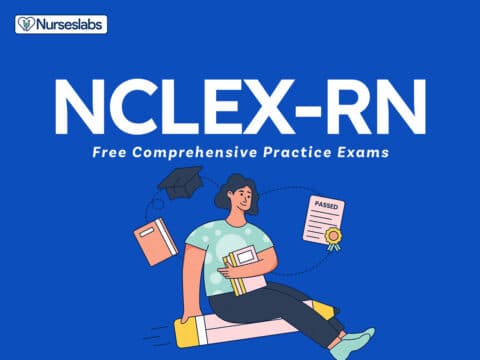
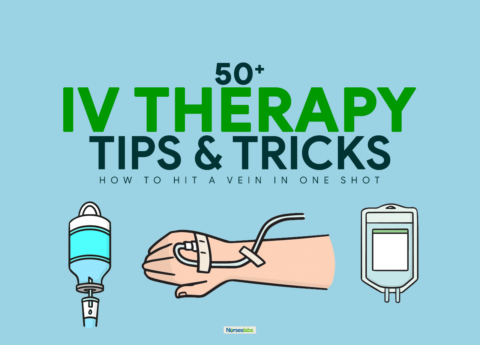
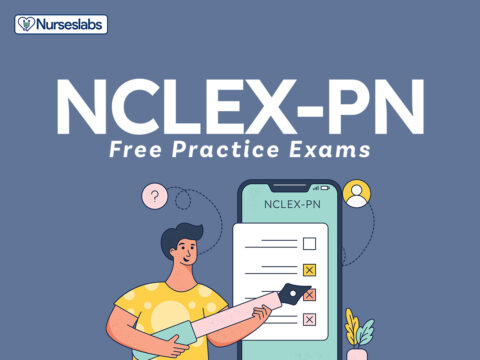
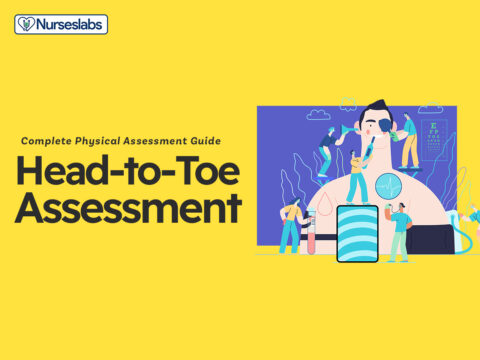











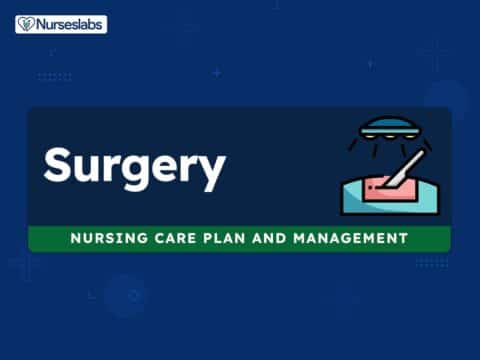

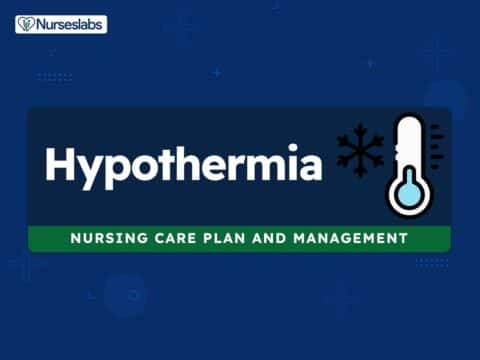
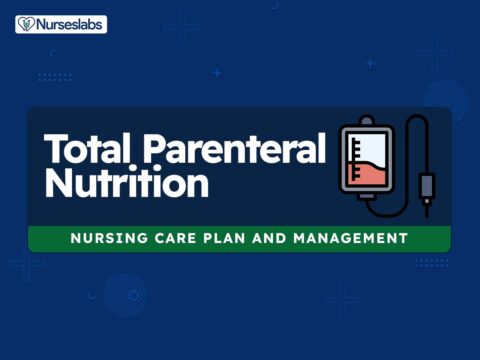
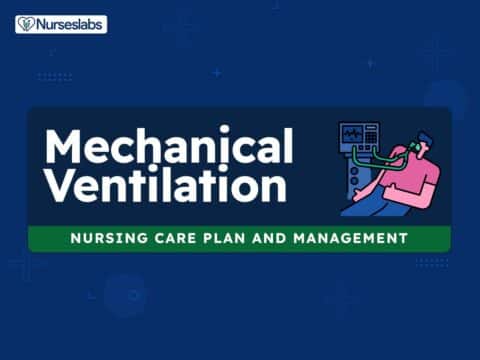
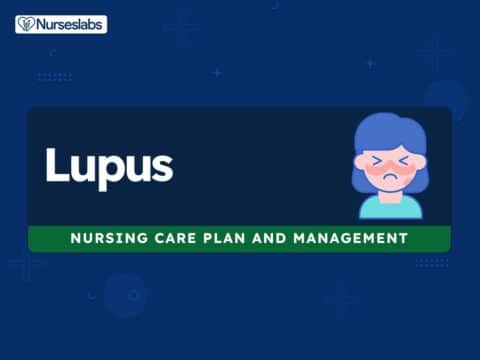
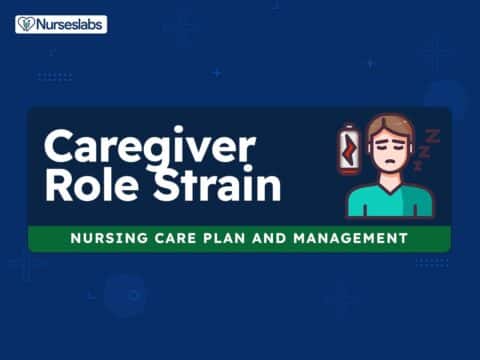
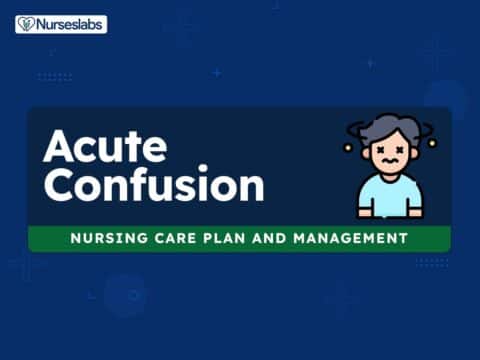
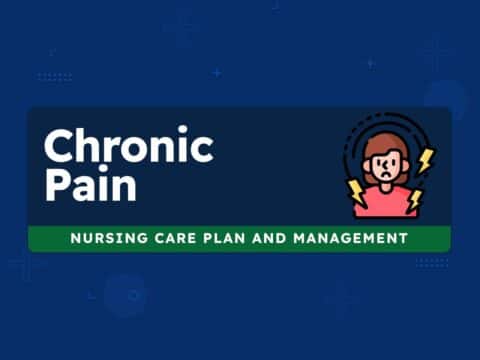
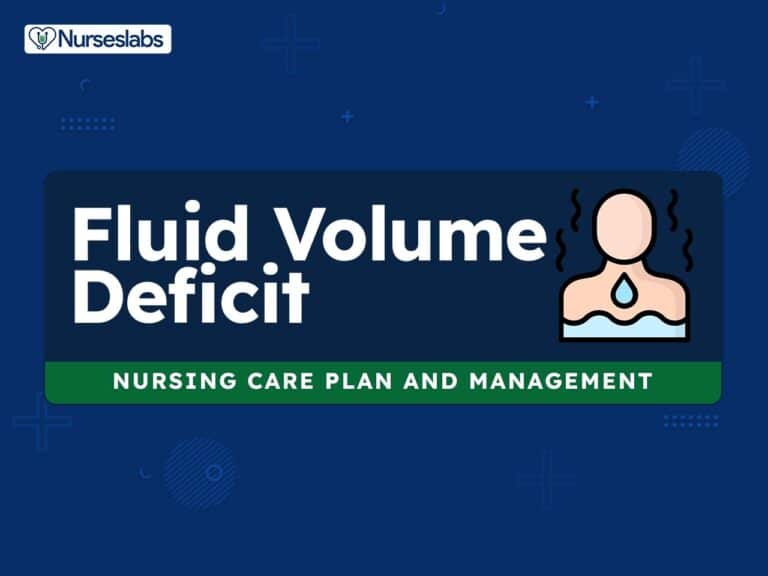
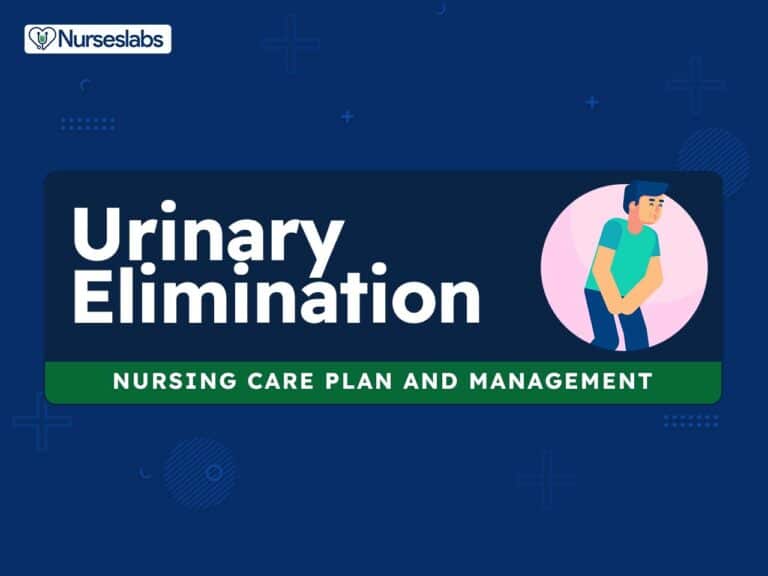
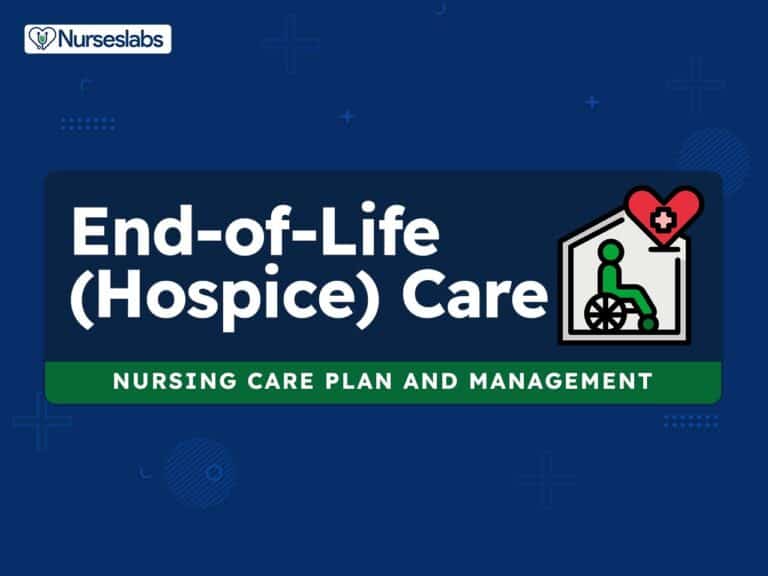
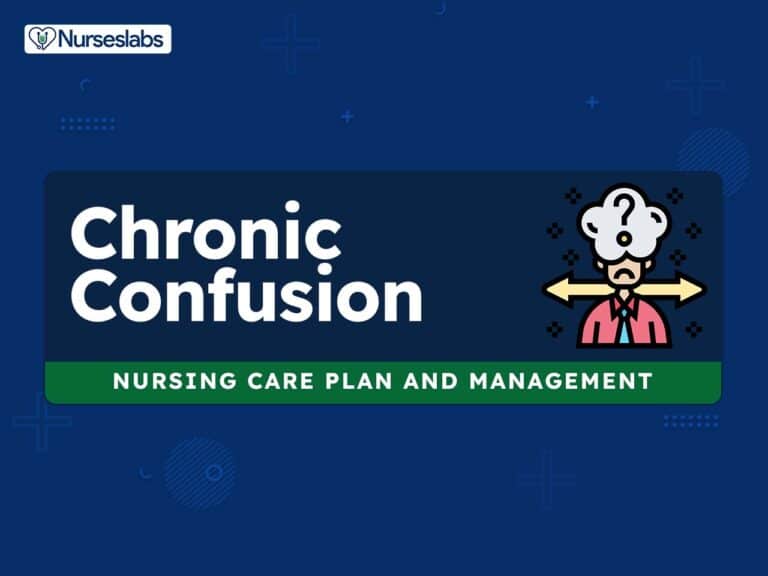


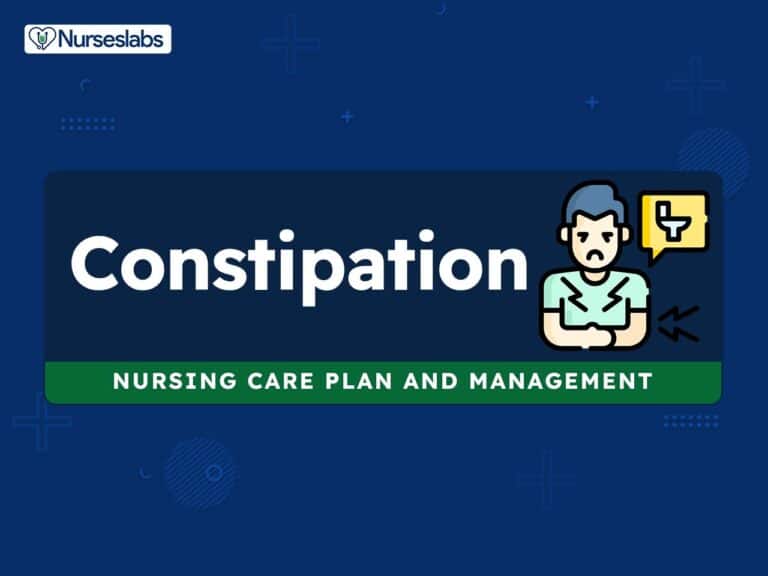
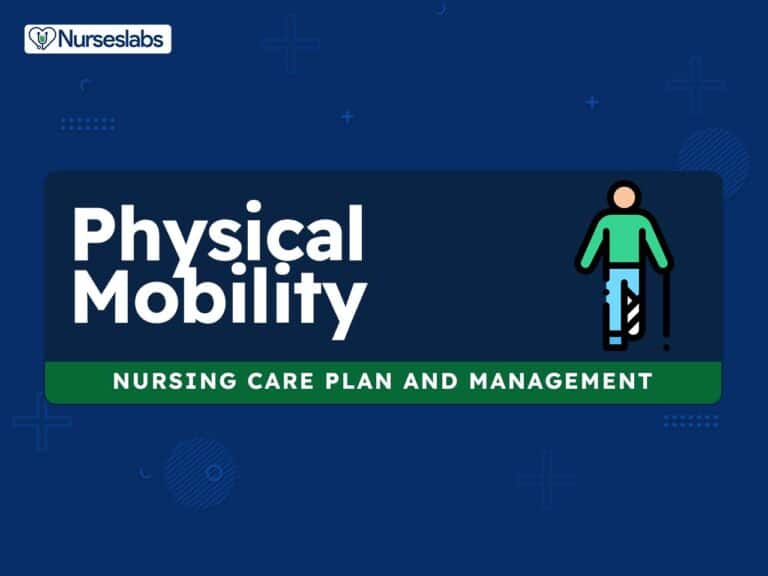
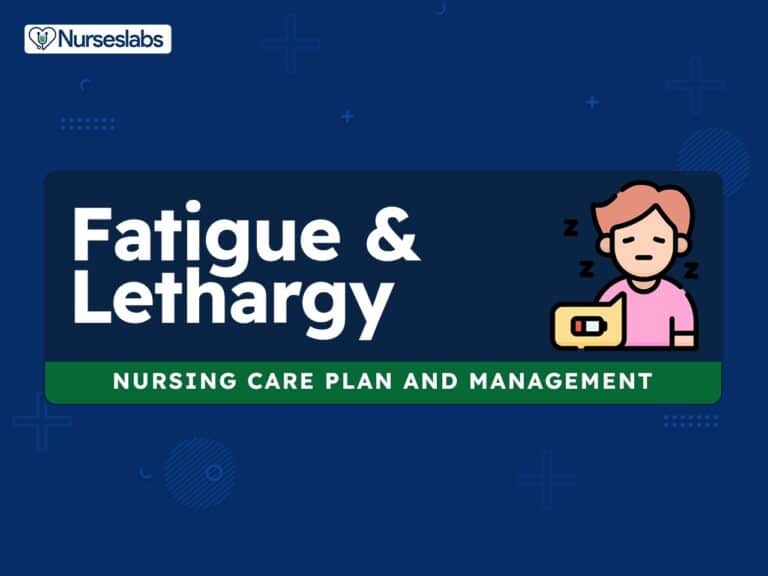
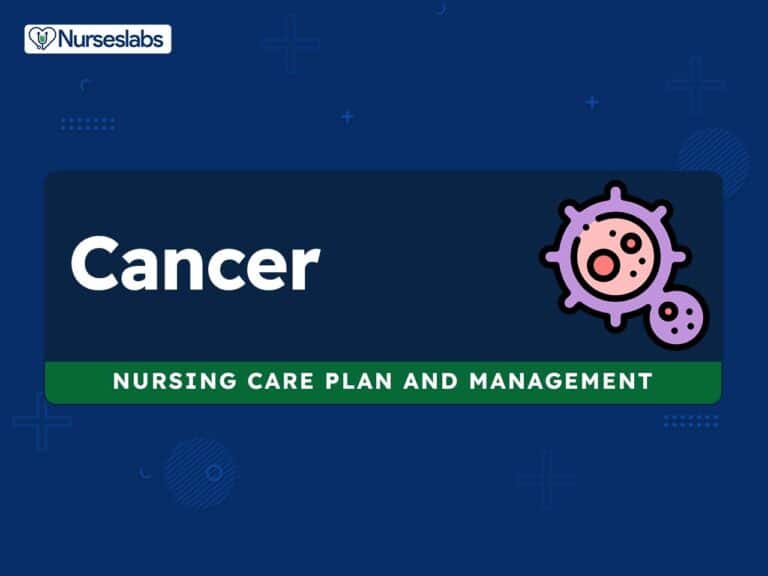
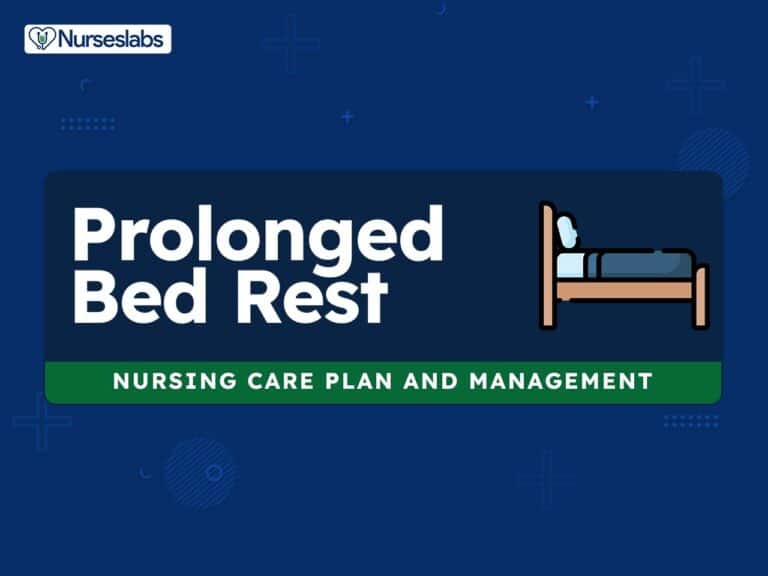

Leave a Comment